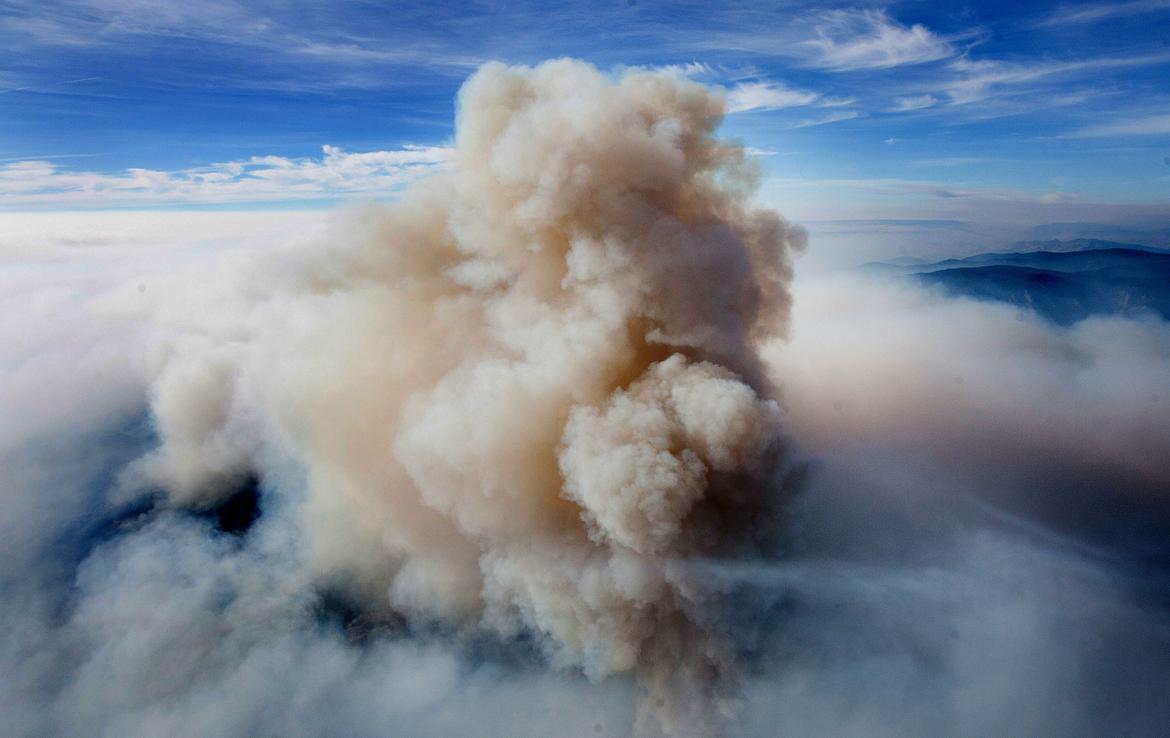Forests most likely to burn would be thinned under Cantwell proposal that’s backed by Idaho’s senators
Posted: November 6, 2017Source: Spokesman

A large plume of smoke and steam rises from just south of Pateros, Wash. from the Carlton Complex Fire. (DON SEABROOK /AP)
The U.S. Forest Service would get new rules to help fight wildfires in some of its most at-risk areas under a bipartisan plan introduced Thursday by Northwest senators.
The proposal would try to reduce the catastrophic wildfires that have plagued Western states in recent years by concentrating on federal forests with ponderosa pines, which some studies show are the most likely to be involved in expensive fires. It tries to walk the line between concerns expressed by environmentalists and supplies sought by the timber industry.
Sen. Maria Cantwell, D-Wash., the bill’s prime sponsor, called it way to give the Forest Service new ways to reduce fires and protect communities. “This science-based pilot program gives the Forest Service tools to address wildfire in our most vulnerable forests and prioritizes cross-laminated timber.”
Co-sponsors include Washington Democrat Patty Murray and Idaho Republicans Mike Crapo and Jim Risch.
The Wildland Fires Act of 2017 would direct the Forest Service to concentrate fire prevention efforts over the next 10 years on its top 1 percent of fire-prone lands – about 2 million acres that are most at-risk and least-controversial – removing smaller trees and installing fuel breaks between forests and urban areas.
According to studies of Western wildfires, that would be forests with ponderosa pines, where some of the most expensive fires have occurred. Recent fires in Washington with that species have included the Carlton Complex fire of 2014 and the Okanogan Complex, Chelan and Colville Reservation fires of 2015.
Congress has considered for several years a change in the federal budget that would set aside money specifically for fighting major wildfires. Supporters want to get away from the current practice of shifting money from forest thinning and other fire prevention efforts during catastrophic fire years.
A bill in the U.S. House of Representatives includes a provision that would lift required environmental studies for forest thinning projects, an idea supported by many Republicans but opposed by many Democrats. The Senate bill filed Thursday would streamline the review for those at-risk forests, with a simpler environmental review to be presented to a collaborative group that includes local industry and environmental representatives.
Announcement of the bill included support from Russ Vaagen of Vaagen Timbers in Colville, the American Forest Resource Council, Conservation Northwest and the National Wildlife Federation.
Thinning operations would remove small and medium-sized trees, with contracts for as long as 20 years. Preferences would be given to operations that would supply mills that produce cross-laminated timber, which is gaining favor as an alternative to concrete and steel as a high-strength building material.
The bill could be considered as stand-alone legislation, but it may also be added to a proposal later this year expected to provide additional aid from disasters in the summer and fall which included devastating wildfires in California. Several of those fires were in ponderosa pine forests but most were in grasslands, residential areas and vineyards.
Although studies show that such forests are the most frequent location for expensive wildfires, focusing on that species may require sponsors to work harder lining up support from Eastern members of Congress. While common in Western states, there are no ponderosa pine forests east of the Mississippi River.
